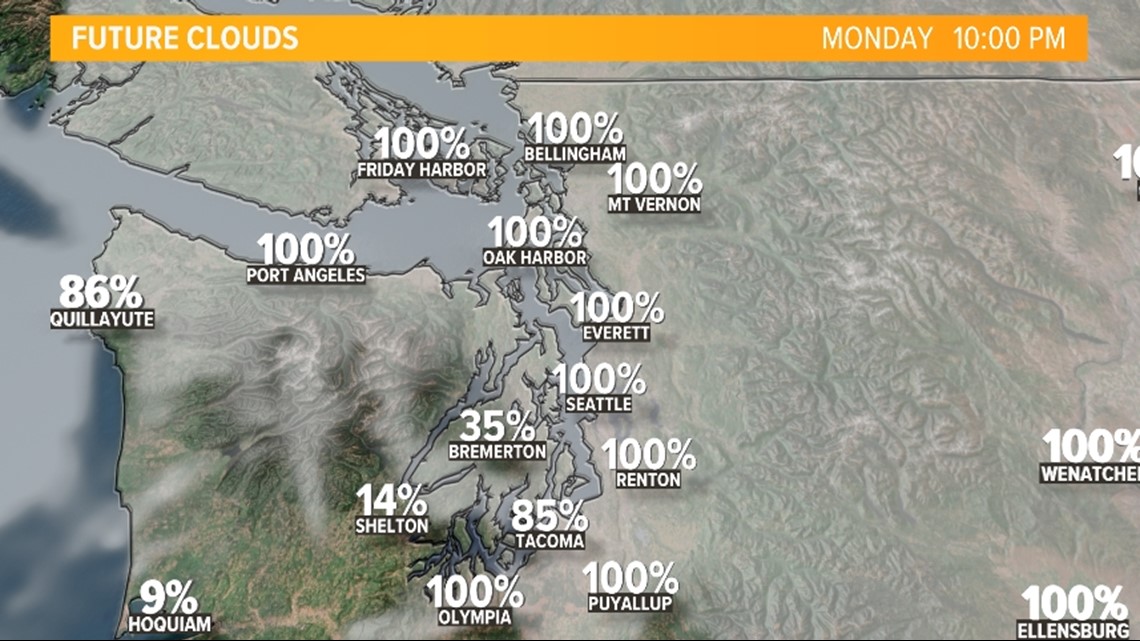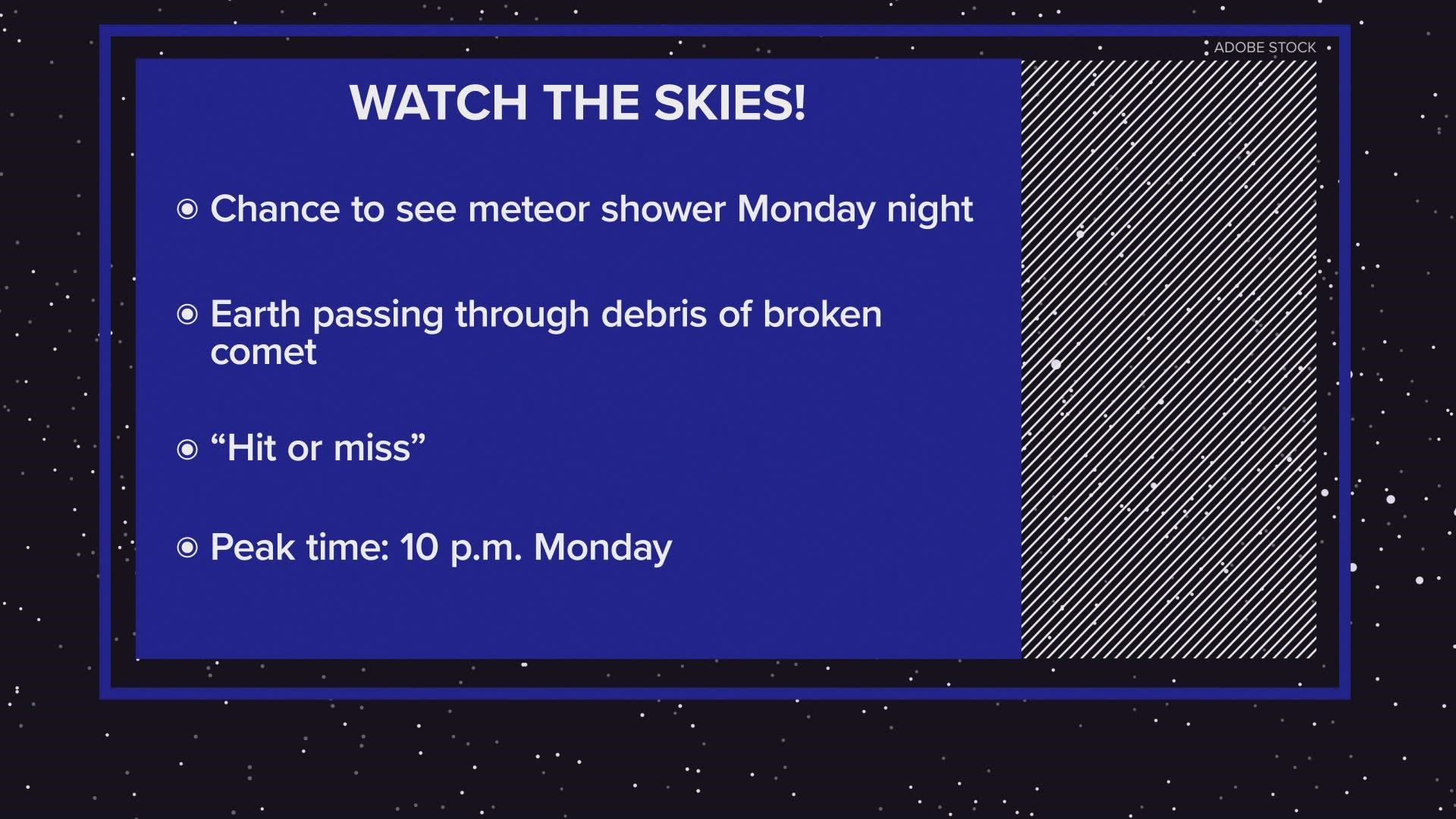SEATTLE — Get ready for the possibility of a spectacular showing in the night sky on Memorial Day as the Tau-Herculids Meteor Shower could put on a cosmic show of a lifetime.
The possible Tau-Herculids Meteor Shower stems from an event that took place back in the 1990s. Comet 73P/Schwassmann-Wachmann 3 broke apart into four large pieces with several smaller, fragmented pieces surrounding the four parent pieces in 1995. Over time the comet has continued to break apart, creating a large debris field of meteoroids.
These meteoroids are often referred to as "space rocks" composed of ice and dust becoming meteors once they've entered the Earth's atmosphere, burning, often leaving a bright tail visible to the naked eye.
Earth will pass through the debris field Monday night, creating the potential for the epic meteor shower. It's possible this meteor shower could become a meteor storm with a large number of meteors. A meteor storm occurs when there are at least 1,000 meteors per hour.
There are high hopes for the meteor shower, but it is not set in stone. No pun intended. Everything must come together perfectly for this cosmic display.
The fragments in the debris field must be large enough and moving fast enough to create one of the best meteor events in recent times. The last meteor storm, the Leonid meteor storm, was back in 1966.
A new moon is in the forecast for Monday night, so moonlight will not obscure the meteor viewing.
The current forecast suggests clouds will be an issue for western Washington and could limit viewing potential for many areas. The areas with the least amount of cloud coverage at peak viewing time are south Puget Sound, the Kitsap Peninsula and the Southwest Interior.


The best time to see the Tau-Herculids Meteor Shower is Monday night into the pre-dawn hours Tuesday, with peak intensity around 10 p.m. Monday, Pacific Daylight Time. Seattle will observe the sunset at 8:57 p.m. Monday.
For the most vivid viewing of the potential meteor storm, go to a rural area away from city light pollution and enjoy.

